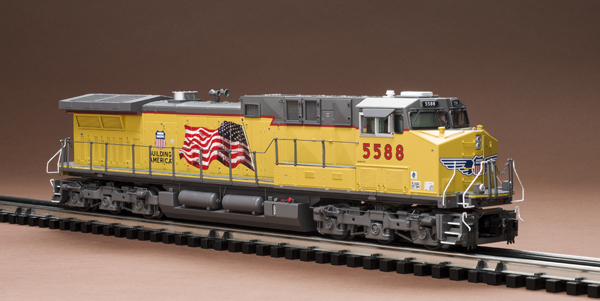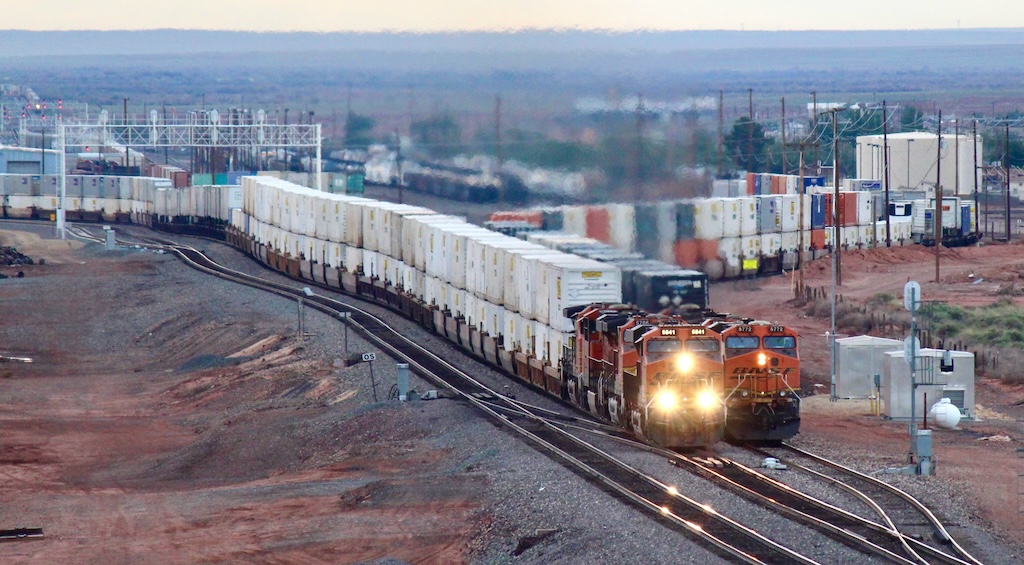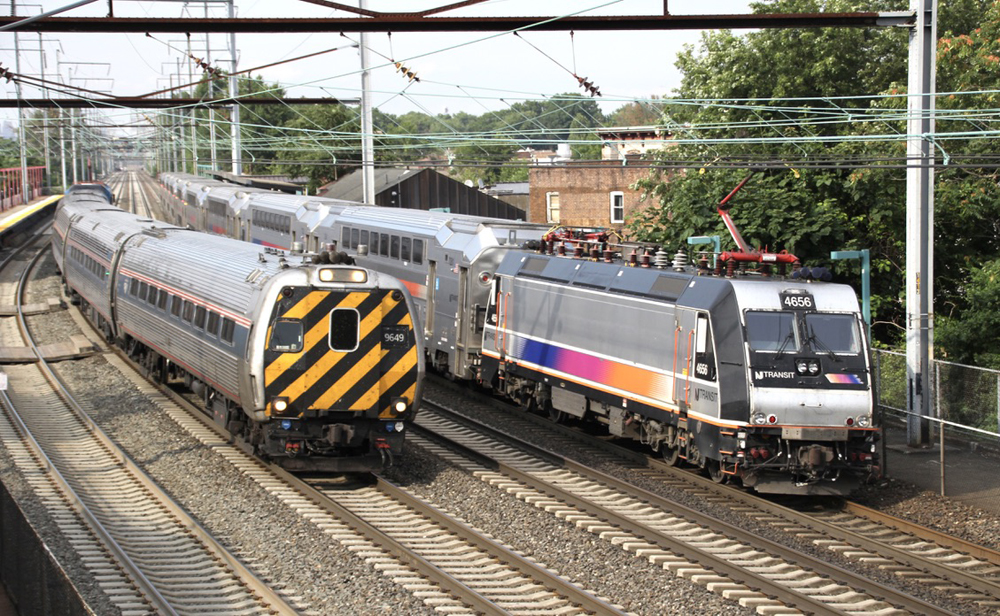Price: $499.95 (no. 20-20641-1) Min Curve: O-42 Cmd Low: 2.89 smph Cnv Low: 3.8 smph High: 54 smph Drawbar pull: 1 lb., 12 oz. Features: Two can-style motors, ProtoSound 3.0 command and sound system, smoke unit Current road names: BNSF, CSX, Kansas City Southern, Norfolk Southern, Union Pacific
Using AC traction motors and taking advantage of sophisticated software designs, the 4,400-horsepower locomotive was a major player in long-haul runs. Nearly 2,600 were built between 1993 and 2004, and they are rostered on 11 fleets, with the three largest being the Union Pacific with 1,338, CSX with 615, and the Canadian Pacific with 438.
Opening the box
The size and heft of the newcomer from MTH took me by surprise. Once the wrapping was discarded, I smiled because this O gauge model has plenty of angles, indentions, and what I like to call “boxy things” that are terrific detail points.
Unusually for me, my eyes were drawn to the trucks. Long three-axle jobs combine with the long gray fuel tank to make this model appear massive and purposeful. There wasn’t much open space under the frame – everything was tucked in nice and tightly.
The pilot is a squarish block with six cables, marked “A&R,” “ACT,” and “MR.” The uncoupler arm is gray, while the area of the handles are accented white.
White handrails line the steps to the deck. There are ditch lights mounted at deck level. The deck has a cast-in safety tread pattern. The nose features a door to the right of the dual headlamps. There is cast-in latch detail, along with add-on grab irons for serving the sand fill caps up top. Six grab irons/hand holds adorn the upper part of the nose. The Union Pacific’s proud winged shield looks amazing.
The cab has interior lighting and crew figures, as well as that light green industrial paint on the motor shield. The front windows have dual wiper arms, and above them are additional grab irons. There is a rear access door behind the engineer.
The side windows are nicely trimmed with aluminum-colored paint, and they have sun shields as well. Topside are the GPS and communications antennas.
The roof is segmented into at least 10 access hatches, some of which have cast-in lift rings or lift hinge detailing. The horn is mounted in the middle, just in front of the exhaust stack.
The radiator wings have a see-through top through which you can actually spy the motor. Oh, you can also access some controls simply by lifting the screen.
The rear pilot platform mirrors the front, with safety chain protecting the gap in the handrails. There are four grab irons leading to the top and an extra handrail on the engineer’s side.
The sides are pretty darned intricate. Many different sets of screens and louvers start behind the cab and run to the rear of the body. Near the rear of the model, the screens and louvers differ on each side.
There is a nicely crafted raised door texture you can feel with your fingertip and wonderfully deep latch and hinge detailing. There are also grab iron steps behind the brakeman’s side of the cab.
Paint and decoration of the model are fine. From top to bottom it is gray, red, yellow, gray decks, yellow stripe, and gray undercarriage. The yellow is the brighter UP Armour Yellow versus the yellow that skews toward orange. Lettering and nomenclature (such as that near the pilot cables) are crisp and clear. On the side, the UP’s “Building America” slogan as well as the depiction of an American flag swirling in the wind are outstanding.
On the test track
The startup sounds on this O gauge model evoke smiles. They make you think you are trackside. The noise of machinery waking from slumber is monumental!
But sound is only part of it – how did it run?
Movement was very smooth, and the system was responsive to changes in direction. Our conventional low-speed average was 3.8 scale miles per hour, while our command-mode speed was 2.89 scale mph. Our high-speed average was 54 scale miles per hour before I chickened out and throttled back.
Drawbar pull was 1 pound, 12 ounces.
Effects to be triggered, such as the horn or bell, crew chatter, and coupler opening, worked every time. Smoke unit output was alarmingly robust for being beneath a sprinkler system.
This model is fun to run and a gas to listen to. It looks great and is a contemporary locomotive for our times. Once again, MTH has delivered a total package sure to please modelers who follow today’s railroading.














